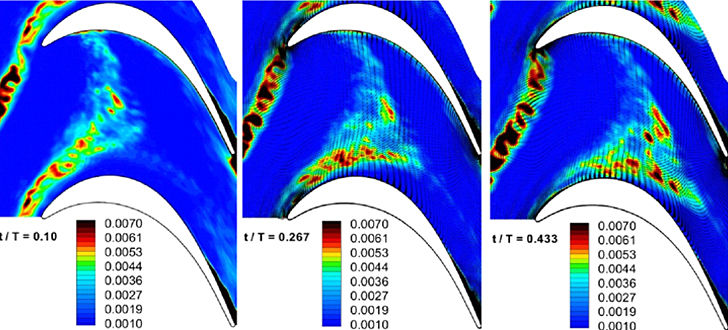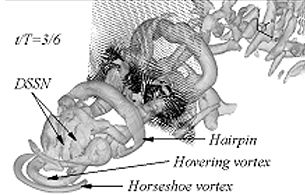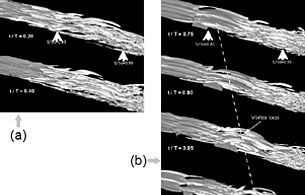
LES of Blade-Wake Interactions
The objective is to keep pace with the recent technological advancement in the field of fluid mechanics and Gas Turbine. Emphasis is on simulation and measurement of unsteady flow fields in Gas Turbine environments. Importance has been equally given on fundamental studies and engineering applications. DNS and LES are applied to explore the physics of the flow. Our work is sufficiently broad to be relevant at the theoretical level to many applications, and to be of fundamental interest in its own right, independently of the valuable potential applications.
Research Areas
- CFD applied to Turbomachinery: Aero-thermal analysis.
- LES/DNS for complex transitional and turbulent flows.
- Flow Instability, Laminar Separation Bubble.
- Unsteady flows in Turbine/Compressor passage: Wake-Boundary layer Interactions and Film Cooling.
- Aero-acoustics and control.
- Flow and turbulence measurement using optical means.
- Experimental investigation on aerodynamics of turbomachinery and transition of a separated boundary layer.
- Heat transfer in rib-roughened ducts
- Simulations of free and forced circular jets
- Experimental and numerical investigations of bifurcating and blooming jets
- Propulsion of underwater vehicles using synthetic jet
Research Laboratories:
- Computational Turbomachinery Laboratory
- Experimental Turbomachinery Laboratory
- Gas Turbine Heat Transfer Laboratory
Associated Faculty
Arun K. Saha, PhD (IIT Kanpur): turbulance, chaos & bifurcation, vortex dynamics, hotwire anemometry, gas hydrates, experimental fluid dynamics and heat transfer, computational fluid dynamics and heat transfer
Subrata Sarkar, PhD (IIT Madras): turbomachinery, turbulence, computational fluid dynamics, LES, experimental fluid mechanics, heat transfer

Film cooling near the leading-edge: Jet Crossflow Interaction

Visualization of Wake distortion, orientation and stretching inside the blade passage

Heat Transfer in Rib-Roughened Ducts (Internal Cooling of Gas Turbine)

Instantaneous vorticity illustrating (a) transition of separated boundary layer when the wake is ahead of separation, (b) the formation of 3D vortex loop via when the wake crosses the rear half of the suction surface
